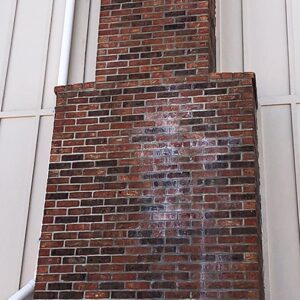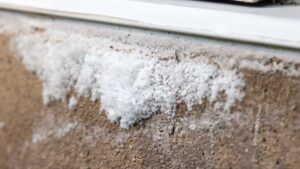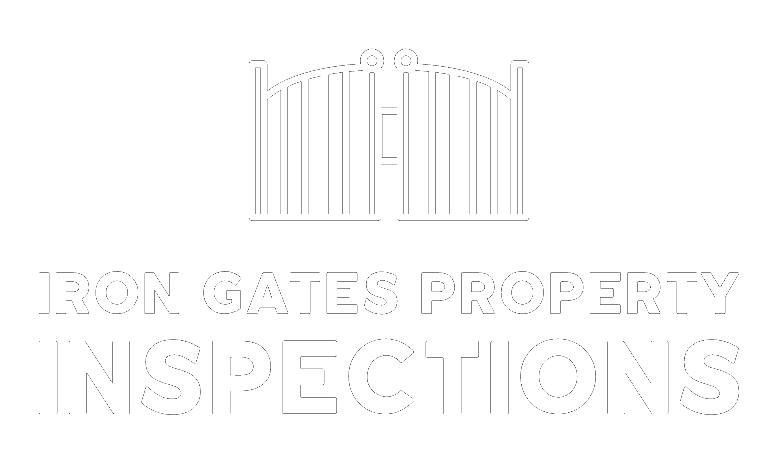What’s That White Stain On Your Chimney? Don’t Ignore It!
You’re enjoying the beautiful scenery, maybe even thinking about cozying up by the fire as the seasons change. But then you spot it: an unsightly white stain marring the brickwork of your beloved chimney.
 What is it, and more importantly, what should you do about it?
What is it, and more importantly, what should you do about it?That white stain is most likely efflorescence, and while it might seem like just a cosmetic issue, it’s actually a significant warning sign that your chimney needs attention.
Understanding Efflorescence: The White Powder Explained
Efflorescence is a powdery, crystalline white deposit that appears on masonry surfaces like your brick and mortar chimney. Think of it as your chimney’s way of telling you there’s a problem. It occurs when three things happen:
- Soluble salts are naturally present in your chimney’s bricks and mortar.
- Moisture (like rain, snow, or even condensation) gets into the chimney structure.
- As that moisture moves through the masonry and then evaporates from the surface, it leaves those dissolved salts behind as a visible white stain.
What Does Efflorescence Look Like?
It’s not usually a uniform, painted-on look. Instead, you’ll typically see:
Color: Most commonly, it’s a powdery or crystalline white. However, depending on the specific minerals in your bricks, it can also appear off-white, yellowish, or even grayish.

Texture: It can range from a fine, dusty powder that you can easily brush off, to a more fuzzy, crystalline, or even crusty growth. You might be able to scrape it with a fingernail.
Location: You’ll generally find it on the exterior surface of the bricks and mortar joints, often in patches, streaks, or areas where water is clearly escaping.
A Quick Test: If you’re unsure, try spraying the stained area with a little water. If the stain temporarily disappears or significantly darkens when wet, only to reappear as it dries, it’s almost certainly efflorescence. This happens because the water redissolves the salts and pulls them back in, then leaves them on the surface again as it evaporates.
The Real Problem: Hidden Moisture Damage
While efflorescence itself isn’t directly harmful, its presence is a blaring siren indicating a moisture problem within your chimney. And that moisture can lead to far more serious and costly damage over time:
- Masonry Deterioration: Water weakens bricks and mortar, leading to cracks, crumb
 ling, and a compromised structure.
ling, and a compromised structure. - Spalling: This is when the face of the brick literally breaks off and flakes away. It’s often caused by water freezing and expanding inside the brick during our cold Ohio winters.
- Flue Liner Damage: Moisture can degrade your chimney’s flue liner, which is essential for safely venting smoke and gases from your fireplace or heating appliance.
- Interior Water Damage: Left unchecked, water can seep through the chimney, causing damage to your home’s ceilings, walls, and insulation.
Common Culprits for Chimney Moisture
So, where is this water coming from? Here are the usual suspects:
- Damaged or Missing Chimney Cap: Your chimney cap is the first line of defense against rain and snow entering the flue.
- Cracked Chimney Crown: The crown is the concrete slab on top of your chimney that directs water away from the structure. Cracks here are an open invitation for water.
- Compromised Flashing: This metal material seals the critical junction where your chimney meets the roof. If it’s old, bent, or improperly installed, water will find its way in.
- Deteriorated Mortar Joints: Over time, especially with our freeze-thaw cycles, mortar can crack and crumble, creating easy entry points for moisture.
- Porous Bricks: Some bricks are more absorbent than others, especially if they haven’t been properly sealed.
What’s Next? Take Action for Your Home!
Seeing efflorescence means it’s time to act. Here’s your recommended plan:
- Schedule a Professional Chimney Inspection: This is the most crucial step. A certified chimney sweep serving the South Russell area can accurately diagnose the source of the moisture and recommend the precise repairs needed.
- Address the Root Cause: Simply scrubbing off the white stain won’t fix anything. The underlying moisture issue must be resolved to prevent the efflorescence from returning and, more importantly, to stop further damage.
- Clean the Stains (After Repairs): Once the moisture problem is fixed, you can clean the efflorescence. Often, a stiff brush will do the trick. For more stubborn stains, a specialized masonry cleaner or a diluted vinegar solution can be used (always follow product instructions carefully and wear appropriate safety gear!).
Don’t let a small white stain turn into a major headache for your South Russell home. Being proactive about efflorescence can save you significant time, money, and stress down the road!
Contact a Chimney Repair Specialist.
